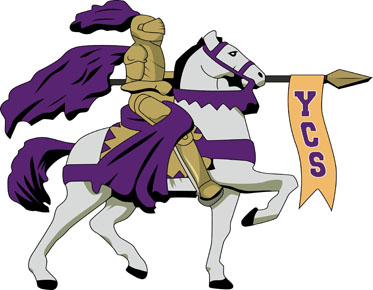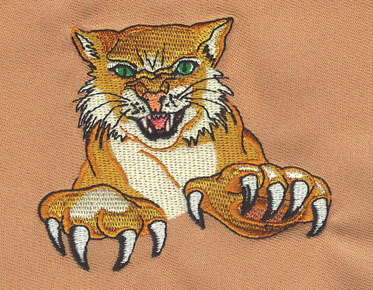Needlework Precision: A Deep Dive into Embroidery Digitization for Uniforms
Embroidered uniforms have long been a staple in various industries, from hospitality and healthcare to corporate settings and sports teams. The intricate designs and professional appearance of embroidered logos and emblems add a touch of class and identity to uniforms, reinforcing brand recognition and instilling a sense of pride among wearers. However, achieving consistent and high-quality embroidery on uniforms requires more than just skilled craftsmanship—it also depends on accurate and precise digitization of the embroidery design. In this comprehensive guide, we will delve into the world of embroidery digitization for uniforms, exploring the process, industry standards, and best practices for ensuring top-notch results.
Understanding Embroidery
Digitization
Embroidery digitization is the process of converting a digital image or artwork into a format that can be read and interpreted by an embroidery machine. This involves creating a series of stitches and thread colors that closely match the original design, as well as defining the size, placement, and density of the stitches to achieve the desired embroidery outcome.
The digitization process begins with a high-resolution digital image of the logo, emblem, or design to be embroidered. This image is then imported into specialized embroidery digitizing software, where it is traced and converted into a series of stitches using various tools and techniques. The digitizer carefully adjusts parameters such as stitch type, density, and underlay to ensure that the embroidered design will be crisp, clear, and consistent across all garments.
Meeting Industry Standards
In the world of uniform embroidery, consistency and quality are paramount. Uniforms are often worn in high-visibility settings where a professional appearance is essential, such as corporate events, trade shows, and customer-facing roles. As such, embroidered logos and emblems must meet industry standards for clarity, accuracy, and durability to uphold the brand image and withstand the rigors of daily wear and laundering.
To meet industry standards for uniform embroidery, consider the following factors:
1. Logo Design: Start with a high-quality digital image of the logo or design to be embroidered. The image should be clear, sharp, and free from pixelation or distortion to ensure accurate reproduction in embroidery.
2. Thread Selection: Choose high-quality embroidery thread that is colorfast, fade-resistant, and durable enough to withstand repeated washing and wear. Match thread colors as closely as possible to the original artwork using a color chart or thread-matching software.
3. Stitch Density: Pay attention to stitch density when digitizing the embroidery design. Too many stitches can cause the design to become stiff and bulky, while too few stitches may result in gaps or inconsistencies in the embroidery.
4. Underlay and Stabilization: Use appropriate underlay and stabilization techniques to ensure that the embroidered design lays flat and remains stable during stitching. This helps prevent puckering, distortion, and shifting of the fabric, especially on stretchy or delicate materials.
5. Size and Placement: Consider the size and placement of the embroidered design relative to the garment and its intended use. Avoid placing designs too close to seams, pockets, or buttons, as this can affect the embroidery outcome and make the design look uneven or distorted.
6. Test Stitchouts: Always test the embroidery design on a sample piece of fabric before stitching it onto the actual garment. This allows you to make any necessary adjustments to the design, thread colors, or stitch settings to ensure optimal results.
Best Practices for Embroidery
Digitization
To achieve consistent and high-quality embroidery on uniforms, follow these best practices for embroidery digitization:
1. Work with Experienced Digitizers: Partner with experienced embroidery digitizers who understand the intricacies of uniform embroidery and can translate your design vision into a flawless embroidery file.
2. Communicate Clearly: Provide detailed instructions and specifications for the embroidery design, including thread colors, stitch types, and placement preferences. Clear communication ensures that the digitizer understands your requirements and can deliver the desired embroidery outcome.
3. Optimize for Production: Consider the production process when digitizing the embroidery design. Optimize stitch counts, thread changes, and color sequences to minimize production time and maximize efficiency without compromising quality.
4. Stay Up to Date with Technology: Keep abreast of advancements in embroidery digitizing software and technology to take advantage of new features and capabilities that can enhance the quality and efficiency of the digitization process.
5. Quality Control*: Implement rigorous quality control measures to inspect and review embroidered samples for accuracy, consistency, and adherence to industry standards. Make adjustments as needed to ensure uniformity across all garments.
In Conclusion
Embroidery digitization is a critical step in
achieving high-quality and professional-looking embroidery on uniforms. By
following industry standards, best practices, and meticulous attention to
detail, you can ensure that your embroidered logos and emblems meet the highest
standards of clarity, accuracy, and durability. Whether for corporate uniforms,
team jerseys, or promotional apparel, precision embroidery digitization plays a
vital role in enhancing brand identity and elevating the overall appearance of
uniforms. So why not invest in the art of embroidery digitization and give your
uniforms the professional edge they deserve?



